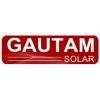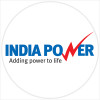
i
SgurrEnergy
Filter interviews by
SgurrEnergy Electrical Engineer Interview Questions and Answers
SgurrEnergy Electrical Engineer Interview Experiences
1 interview found
(1 Question)
- Q1. Transformer protection
Top trending discussions






Interview questions from similar companies

I applied via Naukri.com and was interviewed before Jun 2023. There were 3 interview rounds.
(3 Questions)
- Q1. DFIG Generator?
- Q2. Dv/dt and du/dt filter?
- Q3. Gearbox oil Grade ?
- Ans.
The gearbox oil grade is typically specified by the manufacturer based on the requirements of the gearbox.
Gearbox oil grade is determined by the viscosity and additives needed for proper lubrication.
Common gearbox oil grades include SAE 80, SAE 90, and SAE 140.
Consult the manufacturer's specifications or maintenance manual for the recommended gearbox oil grade.
Pitch convertor system,
(1 Question)
- Q1. Salary discussion
Interview Preparation Tips

(2 Questions)
- Q1. WTG In Reduction
- Q2. Inox wtg issue major component
(3 Questions)
- Q1. Inox wtg most failure generator bearing
- Q2. I am interested over change me and
- Q3. Best company insanewin
Interview Preparation Tips
32 M.G
Electrical all component replacement safety propose receptive awareness Training Certificate in provide by company

I applied via Naukri.com and was interviewed before May 2023. There were 3 interview rounds.
(12 Questions)
- Q1. What are the lifecycle methods?
- Ans.
Lifecycle methods are methods that are automatically called at certain points in the lifecycle of a component in React.
Lifecycle methods include componentDidMount, componentDidUpdate, componentWillUnmount, etc.
These methods allow developers to perform actions at specific points in a component's lifecycle, such as fetching data after the component has been rendered.
They are used to manage side effects, perform cleanup, ...
- Q2. What are the advantages and features of react?
- Ans.
React is a popular JavaScript library for building user interfaces.
Component-based architecture for reusability and easy maintenance
Virtual DOM for efficient updates and performance optimization
JSX syntax for writing HTML within JavaScript
One-way data binding for predictable data flow
Support for server-side rendering for improved SEO
Large community and ecosystem with many third-party libraries and tools
- Q3. Difference between class and functional components?
- Ans.
Class components are ES6 classes that extend from React.Component and have state and lifecycle methods, while functional components are simple functions that take props as input and return JSX.
Class components are defined using ES6 classes and have a render method.
Functional components are defined as simple functions that take props as input and return JSX.
Class components can have state and lifecycle methods like comp...
- Q4. What are the Higher order components?
- Ans.
Higher order components are functions that take a component and return a new component with additional functionality.
Higher order components enhance the functionality of existing components
They can be used for code reusability and separation of concerns
Examples include withRouter from React Router and connect from React Redux
- Q5. What are the React hooks?
- Ans.
React hooks are functions that let you use state and other React features without writing a class.
React hooks were introduced in React 16.8.
They allow you to use state and other React features in functional components.
Some commonly used hooks are useState, useEffect, useContext, and useReducer.
Hooks are more flexible and easier to use compared to class components.
- Q6. What is the difference between contextAPI and Redux?
- Ans.
ContextAPI is a built-in feature in React for managing global state, while Redux is a separate library for state management in React applications.
ContextAPI is built into React, while Redux is a separate library.
ContextAPI is primarily used for managing global state in a React application.
Redux provides a centralized store for state management and follows a unidirectional data flow.
ContextAPI is simpler to use for smal...
- Q7. What are the semantic elements in html?
- Ans.
Semantic elements in HTML are tags that clearly define the content they wrap, providing meaning to both browsers and developers.
Semantic elements help improve SEO by providing search engines with better understanding of the content.
Examples of semantic elements include <header>, <footer>, <article>, <section>, <nav>, <aside>, <main>, <figure>, <figcaption>, <deta...
- Q8. What are the pseudo elements?
- Ans.
Pseudo elements are used in CSS to style specific parts of an element.
Pseudo elements are denoted by double colons (::) in CSS.
They allow styling of specific parts of an element, like the first letter or line.
Common pseudo elements include ::before, ::after, ::first-line, and ::first-letter.
- Q9. What is box model?
- Ans.
The box model is a fundamental concept in CSS that defines the layout of elements on a webpage.
The box model consists of content, padding, border, and margin.
Content: the actual content of the element, such as text or images.
Padding: space between the content and the border.
Border: a line that goes around the padding and content.
Margin: space outside the border, separating the element from other elements.
- Q10. What is hoisting?
- Ans.
Hoisting is a JavaScript mechanism where variable and function declarations are moved to the top of their containing scope during the compilation phase.
Variable and function declarations are hoisted to the top of their scope.
Only declarations are hoisted, not initializations.
Function declarations take precedence over variable declarations.
Example: console.log(myVar); var myVar = 10; // Output: undefined
Example: cons...
- Q11. What is difference between normal function and arrow function?
- Ans.
Normal functions are defined using the function keyword, while arrow functions are defined using the => syntax.
Normal functions are hoisted, while arrow functions are not hoisted.
Arrow functions do not have their own 'this' keyword, they inherit it from the parent scope.
Arrow functions do not have their own 'arguments' object.
Arrow functions are more concise and have implicit return.
Arrow functions cannot be used as co
- Q12. What is splice and slice?
- Ans.
Splice and slice are methods used in programming to manipulate arrays.
Splice is used to add or remove elements from an array at a specific index.
Slice is used to extract a portion of an array and returns a new array.
Example of splice: array.splice(2, 0, 'new element') - adds 'new element' at index 2.
Example of slice: array.slice(1, 4) - extracts elements from index 1 to 3.
Coding questions on Java script like array methods and objects handling. coding questions on React is like life cycle methods using functional components and state management.
(2 Questions)
- Q1. Why should we hire you?
- Q2. How do you handle the work?
Skills evaluated in this interview

Senior Engineer Interview Questions & Answers
CleanMax Enviro Energy Solutionsposted on 14 Oct 2021
Interview Questionnaire
1 Question
- Q1. Technical questions, safety.
Interview Preparation Tips

Electrical Engineer Interview Questions & Answers
CleanMax Enviro Energy Solutionsposted on 15 Dec 2020
I applied via Naukri.com and was interviewed in Nov 2020. There were 3 interview rounds.
Interview Questionnaire
2 Questions
- Q1. Personal and techinical
- Q2. About electrical maintainance , relays, faults
Interview Preparation Tips

I appeared for an interview in Apr 2024.
(2 Questions)
- Q1. About work culture
- Q2. About technical
(1 Question)
- Q1. Related to Transformer

I appeared for an interview in Jul 2024.
(10 Questions)
- Q1. Can you tell me about yourself?
- Q2. What are your responsibilities in the plant?
- Ans.
As a Senior Engineer in the plant, my responsibilities include overseeing operations, managing projects, ensuring compliance with regulations, and leading a team of engineers.
Overseeing day-to-day operations in the plant
Managing projects related to plant upgrades or expansions
Ensuring compliance with safety and environmental regulations
Leading and mentoring a team of engineers
Troubleshooting technical issues and implem
- Q3. Why is tan delta testing conducted in power transformers?
- Ans.
Tan delta testing is conducted in power transformers to assess the insulation condition and detect any potential faults.
Tan delta testing helps in evaluating the insulation quality of power transformers.
It can detect any potential issues such as moisture, contamination, or aging of insulation materials.
By measuring the tan delta value, engineers can assess the dielectric losses in the transformer.
Regular tan delta test...
- Q4. What is a vector group?
- Ans.
A vector group is a method used to represent the phase relationship between the primary and secondary windings of a transformer.
Vector group indicates the connection of transformer windings and the phase shift between them.
It is represented by a combination of letters and numbers, such as Yd1, Dyn11, etc.
Different vector groups have different phase relationships, affecting the transformer's performance and operation.
Ve...
- Q5. What should be considered when erecting an IDT (Inverter duty Transformer)?
- Ans.
Considerations when erecting an IDT (Inverter duty Transformer)
Ensure the transformer is designed for inverter duty applications
Properly size the transformer based on the inverter's output power
Consider the harmonic content of the inverter's output when selecting the transformer
Provide adequate ventilation and cooling for the transformer to handle the increased heat generated by the inverter
Ensure proper grounding and ...
- Q6. What is the star-delta connection in power transformers?
- Ans.
Star-delta connection is a method used in power transformers to reduce starting current and improve efficiency.
Star-delta connection involves connecting the primary windings of the transformer in a star configuration during starting, and then switching to a delta configuration during normal operation.
This method helps in reducing the starting current drawn by the transformer, which is beneficial for the power system.
It...
- Q7. What types of conductors are used in high-tension (HT) lines, and what are their current capacities?
- Ans.
High-tension (HT) lines use different types of conductors with varying current capacities.
Types of conductors used in HT lines include aluminum, steel, and composite materials
Aluminum conductors are commonly used due to their lightweight and high conductivity
Steel conductors are used for their strength and durability
Composite conductors are a newer technology that offer a balance of strength and conductivity
Current cap...
- Q8. What is the distance between poles in 33KV high tension lines?
- Ans.
The distance between poles in 33KV high tension lines is typically around 50-60 meters.
The distance between poles in high tension lines is determined by factors such as terrain, voltage level, and local regulations.
In general, the distance can range from 50 to 60 meters for 33KV high tension lines.
This distance is important to ensure proper support and insulation of the conductors between poles.
- Q9. What is the process of laying LT cables?
- Ans.
The process of laying LT cables involves planning, trenching, laying the cables, jointing, testing, and backfilling.
Plan the route and depth of the trench for laying the cables.
Excavate the trench to the required depth and width.
Lay the cables in the trench, ensuring proper alignment and support.
Joint the cables together using appropriate connectors.
Test the cables for continuity and insulation resistance.
Backfill the ...
- Q10. What is the process for attaching modules?
- Ans.
The process for attaching modules involves identifying connection points, aligning the modules, securing them in place, and testing for functionality.
Identify connection points on both modules
Align the modules properly to ensure a secure fit
Secure the modules in place using appropriate fasteners or connectors
Test the functionality of the attached modules to ensure proper connection
(2 Questions)
- Q1. Why do you want to change jobs?
- Ans.
Seeking new challenges and opportunities for growth in a more innovative environment.
Desire for new challenges and opportunities
Seeking growth and advancement
Looking for a more innovative work environment
- Q2. What can you share about your family?
- Ans.
I come from a close-knit family of four, including my parents and younger sister.
My parents have always been supportive of my career choices and encouraged me to pursue my passion for engineering.
I have a younger sister who is currently studying computer science at university, following in my footsteps.
We enjoy spending quality time together, whether it's going on family vacations or simply having dinner at home.

Electrical Engineer Interview Questions & Answers
CleanMax Enviro Energy Solutionsposted on 16 Jan 2025
I applied via Campus Placement and was interviewed in Dec 2024. There were 2 interview rounds.
Easy test with simple questions
(2 Questions)
- Q1. How do solar panels produce electricity
- Ans.
Solar panels convert sunlight into electricity through the photovoltaic effect.
Solar panels are made up of photovoltaic cells that contain semiconductors like silicon.
When sunlight hits the solar panel, the photons in the light are absorbed by the semiconductors.
This absorption creates an electric current as the electrons in the semiconductors are excited and flow through the material.
The flow of electrons generates el...
- Q2. Tell us about the company
- Ans.
The company is a leading provider of electrical engineering solutions for various industries.
Specializes in designing and implementing electrical systems for commercial and industrial buildings
Offers services such as power distribution, lighting design, and energy efficiency consulting
Works with clients in sectors like manufacturing, healthcare, and telecommunications
Has a team of experienced electrical engineers and t...

Senior Engineer Interview Questions & Answers
CleanMax Enviro Energy Solutionsposted on 5 Oct 2023

(1 Question)
- Q1. About yourself and how many experience in SCM
(1 Question)
- Q1. Subscription materials details
SgurrEnergy Interview FAQs
Tell us how to improve this page.
Interview Questions for Popular Designations
- Electrical Supervisor Interview Questions
- Junior Engineer Electrical Interview Questions
- Electrical Technician Interview Questions
- Assistant Electrical Engineer Interview Questions
- Electrical Maintenance Engineer Interview Questions
- Diploma Electrical Engineer Interview Questions
- Manager – Electrical Interview Questions
- Electrical Maintenance Technician Interview Questions
- Show more
SgurrEnergy Electrical Engineer Interview Process
based on 1 interview
Interview experience
Interview Questions from Similar Companies
|
Project Engineer
12
salaries
| ₹4.2 L/yr - ₹7.5 L/yr |
|
Associate Engineer
11
salaries
| ₹3 L/yr - ₹6 L/yr |
|
Senior Engineer
11
salaries
| ₹4 L/yr - ₹14.5 L/yr |
|
Senior Project Engineer
10
salaries
| ₹4.2 L/yr - ₹14 L/yr |
|
Electrical Project Engineer
8
salaries
| ₹3 L/yr - ₹9 L/yr |

UTL Solar

Danfoss Power Solutions

LM Wind Power

Senvion
- Home >
- Interviews >
- SgurrEnergy Interview Questions >
- SgurrEnergy Electrical Engineer Interview Questions









